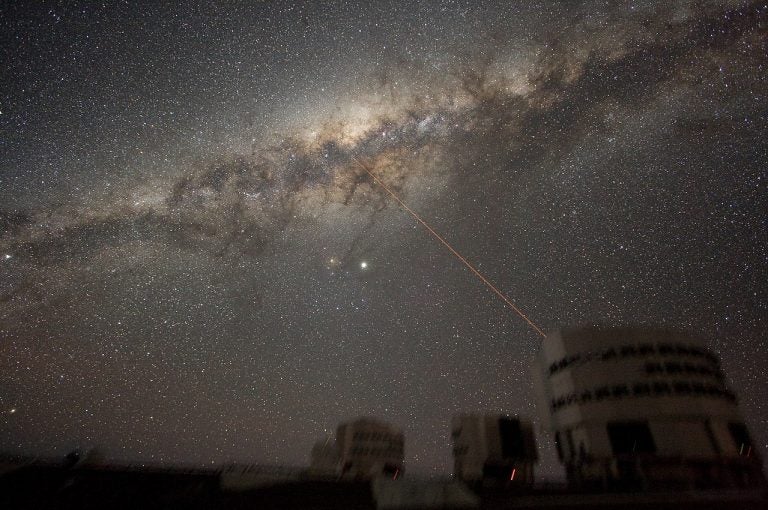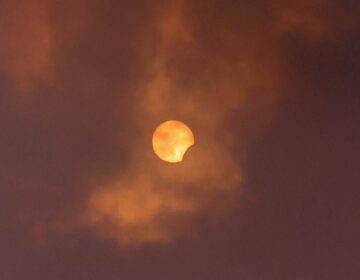Hidden In Plain Sight
Listen 06:14
The Milky Way's Galactic Center in the night sky above the Paranal Observatory (the laser creates a guide-star for the telescope). ESO/Y. Beletsky
Our Milky Way has two very well known galactic companions: The Large and the Small Magellanic Clouds, irregular-shaped galaxies both about 170,00 light years from Earth. Both are visible to the naked eye in the southern sky.
The European Space Agency’s GAIA Space mapping satellite has detected another attendant galaxy hiding behind the Milky Way’s disc: The newly named “Antlia 2” is 1/3rd the size of our Milky Way itself. Determination of its mass indicates it is unusually light for a galaxy of its size.
Researchers are suggesting that it is so because Antlia 2 is being slowly taken apart by galactic tides of our Milky Way Galaxy, even though it doesn’t come much closer than 130,000 light years away. We haven’t seen it before because of where it’s placed and because it’s 10,000 times dimmer than LMC, sort of like a ‘ghost’ galaxy.
That means either it’s far too large for the amount of energy it gives out or far too dim for its size.
The 2nd closest star to Earth Barnard’s Star is just six light years away (about 2 light years farther than Proxima Centauri – our nearest celestial neighbor).
Astronomers have confirmed the existence of a planet three times the mass of Earth, 40 million miles from its low-mass red dwarf sun, with a surface temperature of 275 degrees below zero.
According to NASA, the current number of confirmed exoplanets: 3,838.
WHYY is your source for fact-based, in-depth journalism and information. As a nonprofit organization, we rely on financial support from readers like you. Please give today.




